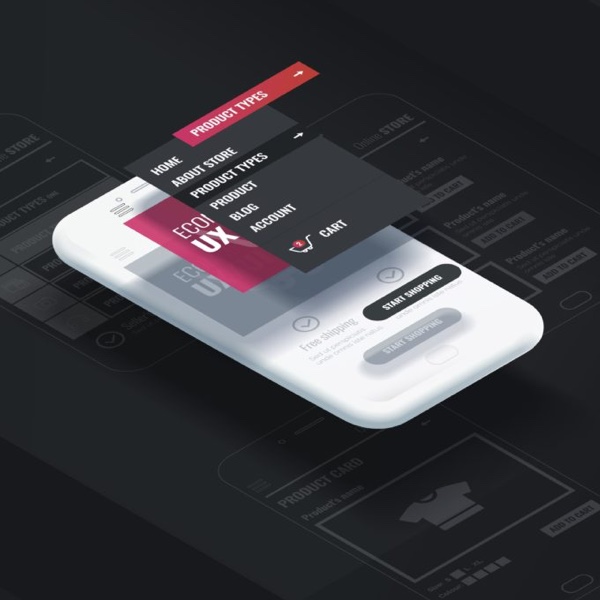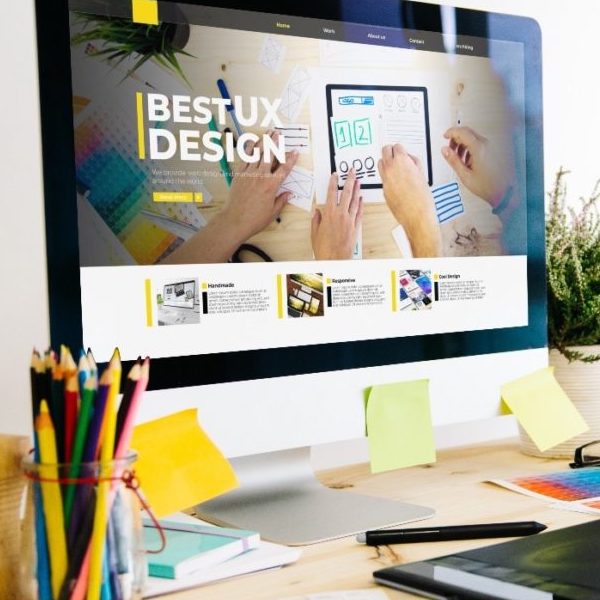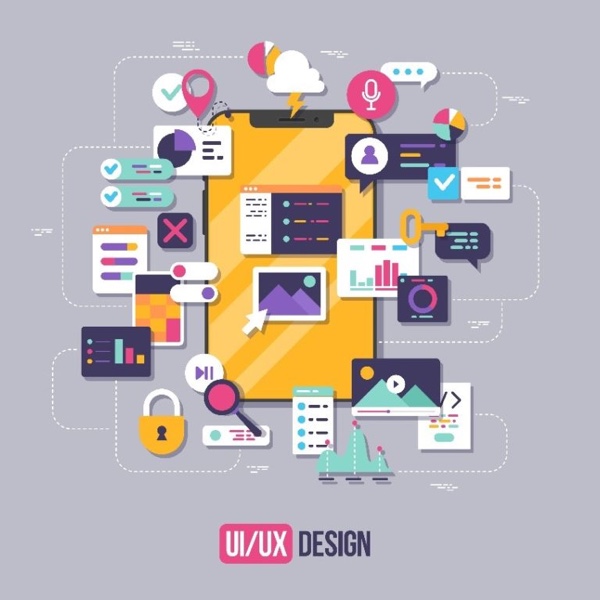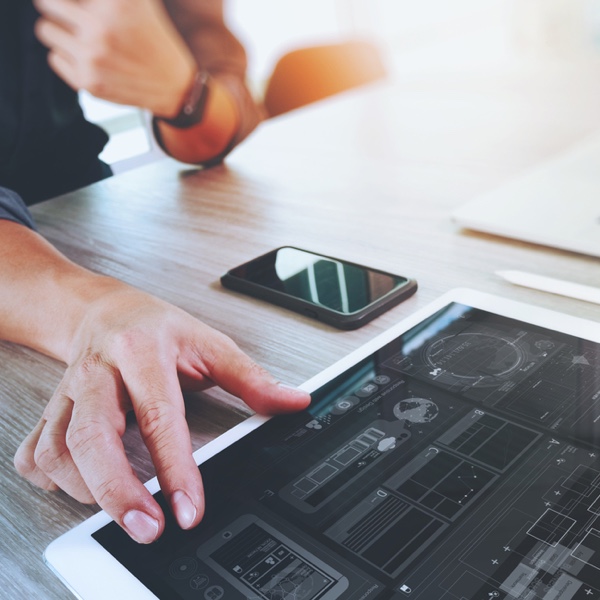The terms UI (user interface) and UX (user experience) are often used interchangeably, which is probably the reason for the confusion between the two. While both are related to user experience, UX and UI are two distinct processes that work closely together to create an exceptional experience for the user.
UI focuses on enhancing the presentation and interactivity of a web or mobile application while UX ensures a complete overall experience that includes but is not limited to speed, performance, overall layout, products, services, and interface. While both UI and UX cover the user interface aspect, UX is concerned with the macro elements while UI deals with the microelements of the interface.
To help you gain a deeper understanding of UI/UX design and differentiate between the two, we’ll give you the lowdown on what these terms mean individually, how they differ, and why both are integral to creating a superior user experience.
What is User Interface (UI) Design?
UI includes all the presentation elements of an application. For instance, it is comprised of all visual elements like pages, icons, and text font and color, to name just a few. So, does UI focus on the presentation aspect of a digital product? Partly yes and partly no. Yes, because the appearance of the website is the primary responsibility of the UI designer. No, because UI is not limited to the aesthetic effect alone but also deals with interactive design elements like text-entry fields, buttons, and sliders.
UI designers are, in essence, graphic designers, responsible for the look and feel of the product.
What is User Experience (UX) Design?
User experience (UX) is the entire experience provided by the app. For instance, it’s concerned with factors like speed, performance, navigation, location of items, and other features and functionality that define the overall user experience. Don’t you know a good UX when you experience it? For example, some sites are extremely easy to navigate, enable users to locate items of interest easily, and are fast in terms of loading the desired content.
UX designers are responsible for creating an incredible and memorable user experience that makes you stay longer on a given site as opposed to leaving it in frustration on not being able to navigate the website easily, find items of interest or achieve whatever you wanted to with the app.
Differences between UI and UX Design
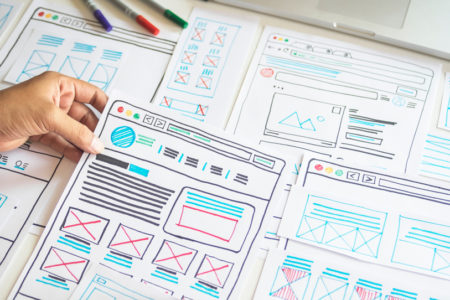
Now that we know what primary activities are included in UI/UX design, let’s explore the differences between the two design functions.
1. UX for Macro Design, UI for Micro
Custom UX design is concerned with offering a company’s product or service in the best possible manner and delivering a quality experience when users visit your website. For instance, the process that a user would have to follow to search and purchase the desired item on a website is planned by the UX designer. Therefore, developing the user flow and framing the overall design are UX responsibilities while the look of the app – visual appearance of the buttons and how they change on being clicked – is the function of UI.
To put it simply, UX is responsible for the overall interface design, which can be referred to as the macro interactivity of the application whereas UI is responsible for the micro interactivity of the user interface and even minute visual details like the color and design of buttons and icons.
2. UX for Functionality, UI for Aesthetics
UX is concerned with how the user interface works while UI deals with how it looks. UX designers are responsible for researching the market and competitors based on which they conceptualize, develop, and deliver a product that helps meet the end-user’s needs in an easy manner. As such they are responsible for the purpose and functionality of the product and also how the end-users interact with the company by ensuring easy and fulfilling interactivity that creates value for them. A UX designer is thus responsible for creating an end-to-end effortless and fulfilling experience that can help retain customers.
Therefore, apart from the technological aspect, UX designers take care of research, analysis, project management, and testing conducted over a product’s entire lifecycle. After designing and testing the user flows and prototypes, the UI designers begin working on developing the presentation – creating an aesthetically pleasing effect that includes designing components and visual elements to the minutest details. They create a visual flow that helps users navigate and follow a route or sequence of tasks to accomplish a goal, such as searching for a product or filling an inquiry form.
3. UX Helps Fulfill Needs of Users, UI Connects with Them
UX designers try to meet different users’ needs as much as possible. For instance, a portal of customer reviews may include reviews of electronic gadgets as well as high-end cosmetic products, among other things. In that case, is it just as easy to find reviews of all product types? Similarly, readers of a news subscription site may have varied interests and requirements. While movie buffs may look for entertainment-related articles, corporate executives and entrepreneurs may look for business and finance related news or both, in some cases. Does the site make it easy to locate items of interest? Is the site catering to all target user groups? And is it easy to switch from one genre to another?
As mentioned previously, UX designers conduct research and try to increase usability by understanding the needs of the target customer groups. What are the users’ needs? What other value-added products and services are they looking for? Again, how promptly and easily are the users’ needs met? Are they able to easily locate what they’re looking for or do they have to spend precious time in non-value activities before being able to accomplish their objectives?
The UI team, on the other hand, is concerned with the branding and developing a personable interface, based on the product. It further aims to create a stunning visual appeal that customers can connect with. Are the visual elements making a personal connection? Are the branding and design exuding a positive and warm feeling? Is it designed to catch the users’ pulse? The answers to these questions will determine whether users are likely to return or find a more appealing alternative.
4. UX Design Precedes UI
While both UX and UI design the user experience, the distinction between them is further evident from the fact that they are carried out at different time spans. Since the macro design of a website or mobile application needs to be in place before one can work on the microelements and interactions, UX design must precede UI.
And even before the macro design of the user experience, UX designers first need to conduct research and analysis to understand user needs, which is what the final product will be based on. So, in any event, UX design always precedes UI.
For instance, an artist has to conceptualize the big picture before designing its components and elements. Finally, when both the macro and microelements take shape, the artist can focus on the minutest details or applying finishing touches towards the end to complete it. Similarly, the role of UI designers comes into play later in the design stage.
This is not to imply that after the UI design, UX design cannot be modified. Several iterations of UI/UX design may be required before a project’s completion.
5. UX Focuses on Products, Interfaces, and Services and UI Only On Interfaces
UI is limited to designing user interfaces while UX focuses on conducting research to understand user needs and developing products and services designed to fulfill them. It also extends to the design of the interface and overall layout of the web or mobile application. The responsibilities of UX designers are comprised of an umbrella of functions that relate to the end-to-end user experience that goes beyond creating interfaces, unlike those of UI designers.
This does not mean that UI is any less significant. While it relates to interfaces, in practice it extends to developing an app personality that resonates with the product, services, and overall experience. UI focuses on creating a personal connection with the target audience. This is by no means a small task.
UI/UX Design is Integral in the Digital Age
While being distinct from one another, UX and UI design functions work in tandem to deliver a fulfilling customer experience. For instance, a stunning interface design loses its appeal if it doesn’t deliver a satisfying experience. If the site is slow or the product doesn’t meet users’ needs, the visual effect is rendered useless. Similarly, if the product meets user requirements but the site is not easy to navigate, it would be hard for the user to locate the item of interest or place an order.
Although their roles are separate, UI/UX design relates to user experience in the end and thus they work in close collaboration. Although UI designers are responsible for the interface, they must develop it in tune with the products, services, and the overall functionality, as envisioned by the UX designers.
Finally, we conclude that when it comes to UI/UX design, one cannot exclude the other. These functions work synergistically to hopefully create a complete and fulfilling user experience. Refer to Bitbean’s UX case studies for practical examples of applying the user experience design process to develop custom software to help businesses scale.
Contact Bitbean to discuss your custom software requirements and discover how we can help you build a customized digital presence that provides users with an experience that is unique to your business.

